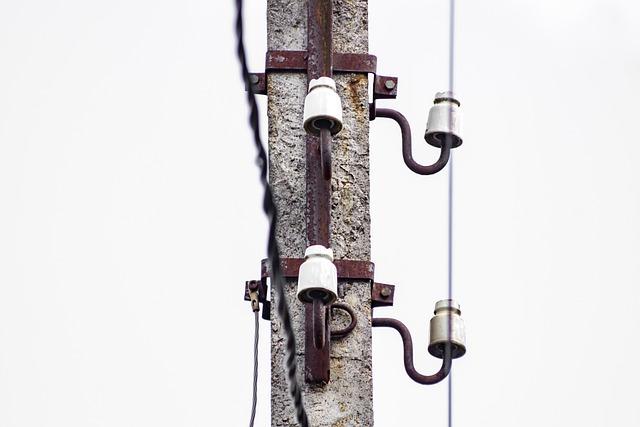As concerns over climate change and air pollution intensify, the electrification of boats is emerging as a promising solution to reduce greenhouse gas emissions and improve public health. However, transitioning the maritime industry from diesel-powered vessels to electric propulsion presents a complex set of challenges-from technological hurdles to infrastructure gaps and economic considerations. Inside Climate News delves into the growing movement toward boat electrification, exploring both its environmental benefits and the obstacles that must be overcome to make the switch a widespread reality.
Challenges in Transitioning to Electric Boats and Overcoming Infrastructure Barriers
The shift from traditional combustion engines to electric propulsion in boating is not without its hurdles. One of the primary obstacles lies in the limited charging infrastructure at marinas and docks, which often lack the capacity or technology to support electric vessels. This gap not only hinders long-distance travel but also contributes to “range anxiety,” discouraging boat owners from embracing the technology. Additionally, the upfront cost of electric boats remains significantly higher compared to their gasoline counterparts, creating financial barriers for many consumers and fleet operators. Without widespread charging stations and affordable options, adoption rates risk stagnation despite the clear environmental benefits.
Addressing these challenges requires a multi-pronged approach involving public investment, private sector innovation, and regulatory support. Stakeholders are exploring solutions such as:
- Smart charging networks that optimize energy distribution and reduce strain on local grids.
- Battery swapping stations to minimize downtime for electric boats during longer trips.
- Incentive programs to offset initial purchase costs and encourage fleet conversions.
| Barrier | Proposed Solution | Impact |
|---|---|---|
| Limited Charging Stations | Install Smart Chargers at Marinas | Higher Accessibility |
| High Upfront Costs | Government Rebates & Incentives | Increased Affordability |
| Range Anxiety | Battery Swapping Networks | Extended Travel Range |
Health and Environmental Benefits Driving Policy Support for Boat Electrification
Policy momentum behind boat electrification stems from a growing recognition of its dual benefits for climate health and public well-being. Electric boats drastically reduce greenhouse gas emissions compared to their diesel or gasoline counterparts, directly contributing to national and global carbon reduction goals. Moreover, these vessels eliminate the release of harmful pollutants such as nitrogen oxides and particulate matter, which impair air quality and contribute to respiratory diseases in coastal communities.
Legislators and environmental advocates are rallying around several key health and ecological advantages:
- Lowering toxic emissions near popular waterways and marinas
- Reducing noise pollution that disturbs aquatic wildlife
- Minimizing oil and fuel leaks that can harm marine ecosystems
- Encouraging sustainable tourism and cleaner recreational boating
| Benefit Category | Impact |
|---|---|
| Air Quality Improvement | Up to 90% reduction in harmful emissions |
| Wildlife Protection | Quieter operations reduce aquatic disturbance |
| Water Quality | Diminished risk of fuel contamination |
| Community Health | Improved respiratory outcomes in coastal areas |
Innovative Solutions and Stakeholder Collaboration to Accelerate the Electric Marine Revolution
Transforming the marine industry towards electric propulsion demands a multifaceted approach that bridges technology, policy, and community engagement. Pioneering companies are developing cutting-edge battery systems and charging infrastructures tailored for diverse vessels, from small recreational boats to commercial ferries. However, technical innovation alone cannot drive widespread adoption. Success hinges on collaborative frameworks that unite boat manufacturers, port authorities, environmental groups, and government agencies to streamline regulations, incentivize clean investments, and enhance public awareness.
Stakeholder engagement accelerates progress by addressing key challenges such as cost barriers, range limitations, and maintenance complexities. Initiatives often focus on:
- Joint pilot projects demonstrating electric marine viability in real-world conditions
- Shared infrastructure development to ensure accessible charging points
- Policy harmonization that simplifies permitting and supports subsidies
- Community outreach to shift cultural perceptions and build trust
| Stakeholder | Role | Key Contribution |
|---|---|---|
| Manufacturers | Innovation | Develop electric propulsion systems |
| Governments | Regulation | Establish policies & incentives |
| Ports | Infrastructure | Install chargers and docks |
| Environmental NGOs | Advocacy | Raise awareness & monitor impacts |
The Way Forward
As the maritime industry navigates the complex journey toward electrification, the potential benefits for both the climate and public health are clear. Reduced emissions from electric boats promise cleaner air and a smaller carbon footprint, marking a crucial step in combating climate change. However, the transition is fraught with technical, economic, and regulatory challenges that require coordinated efforts from policymakers, manufacturers, and consumers alike. While the road ahead is challenging, the stakes are high-and the progress made today will determine the future of our waters and the health of communities worldwide.
